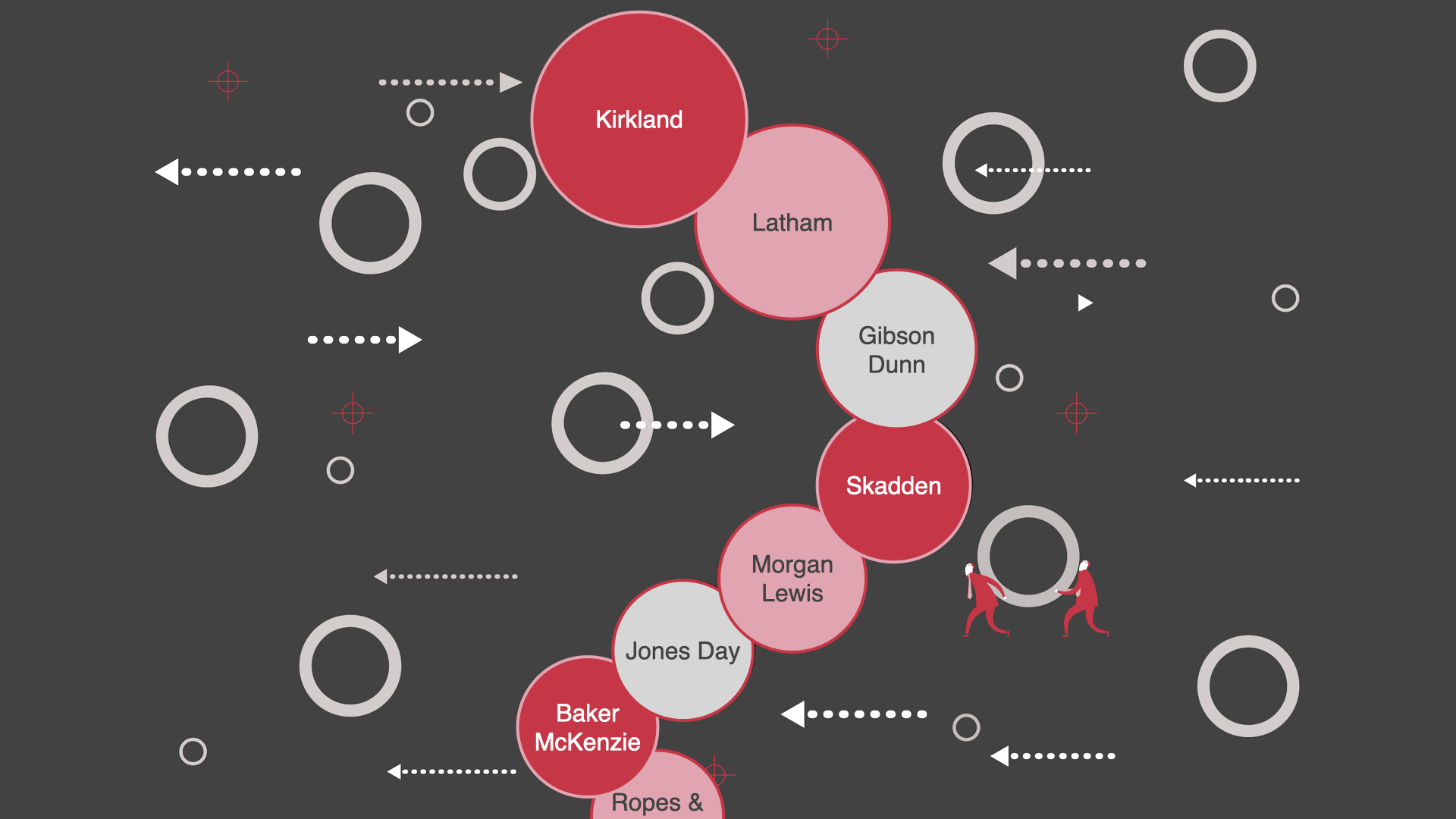Brand = strategy made visible
A professional service firm’s brand should be the bridge between its overall strategic plan and its day-to-day marketing activities.
This article illustrates how some leading professional service firms use their brand narrative and positioning to ignite their strategies, align their leaders, engage their teams, and inspire actions that impact the market.
What you do is who you are
A confident and successful business doesn’t hide its strategy — it should be visible to all — and the organisation’s brand should be the most tangible manifestation of that strategy, leading the charge on transformation to all its audiences, inside and outside.
There are many complex and complicated business school definitions of what makes a good strategy — try googling it — but the best is Michael Porter’s aphorism that “the essence of strategy is choosing what not to do.”
So, if strategy is choosing what not to do, brand is telling the story of what’s left.
Or, putting it more positively, if a sound strategy requires making sometimes difficult trade-offs on where you think you can win, then a good brand becomes the celebration of the benefits of those difficult decisions.
When an organisation’s brand and strategy are working well together, you should be able to go to their website and after a few clicks know the strategy.
Logos are not brands
These days the logo is a far less critical part of the brand than it once was. These days, there are so many channels of communications flowing around that add or subtract to the brand story — many of which are far more content-based and have little or no visual component.
What makes a good brand in this environment is a precise positioning, narrative, and disciplined set of high-level key messages that provide a strong bridge between strategy and marketing.
A good brand requires a good strategy, but a good brand doesn’t always flow from one. Too often, they are disconnected, and many firms have vague and squishy brands.
When an organisation’s brand and strategy work well together, you should be able to go to their website and know the strategy after a few clicks.
This should apply to the firm’s sub-brands and major service lines, as well as the overall firm.
If you can’t, either the marketing team is detached from the leadership and strategy process, or there is a strategy vacuum, and the marketing team has just gone rogue and made something up.
Side by side
Look at Apple, Google, Nike, and Unilever — their strategies are clear and made visible in their brands. Their strategies are clear because their brands are built on them.
Then look at some of their direct rivals: Huawei, Yahoo, Adidas, and P&G — they are less clear. We could guess their strategies, but their brands are less clear and compelling.
These organisations may have good strategies, or they may not — but their strategies are likely a bit vague as well. They are vague to us on the outside looking in and probably just as vague to their people on the inside.
The discipline of marketing and branding can add real value to a firm’s strategy process
Shining through
Closer to the world of professional service firms, there are some excellent examples where it’s easy to see a distinctive strategy shine through in how a firm communicates its brand.
PA Consulting, the innovation company (and, full disclosure, a client of mine), is a perfect example of ‘brand = strategy made visible.’ As a client, of course, I’m under a strict NDA not to divulge any confidential info, and yet I can easily ‘show’ their strategy because it’s crystal clear in their brand, which you can find all over the place.
The brand concept is ‘Bringing ingenuity to life’, which tells you quite a lot about the strategic choices they’ve made and where they are focused on being the best, in only four words.
Spend a few seconds looking through their website, and it’s clear what they stand for, what kind of work they do, who they do it for, and what they are passionate about.
You can easily imagine that those people who work inside PA Consulting are also pretty clear about their strategy and are well-placed to take action in their day-to-day lives to help implement it—the holy grail of achieving strategy ambitions.
A couple of other shining examples in professional services: Quinn Emanuel, the world’s biggest litigation-only law firm, has the brand statement, ‘Litigation is a zero-sum game. There is a winner and a loser. We know how to win.’ How clear is that!
They’ve made strategic choices about what not to do, and in their brand, they are celebrating the benefits of that strategy towards their audiences (clients and recruits).
It won’t surprise you to know that Quinn Emanuel prides itself on being a bit different from other big law firms in how they operate internally. They’re known in the recruitment market for their ‘flip-flop’ culture, or “Talent mandatory. Suit optional.” as they put it on their website.
How many strategy papers have you read that contain a shopping list of ‘priority’ services, sectors, geographies?
Another terrific one is Shillings. I don’t even know how to say what kind of organisation they are — they used to be one of many law firms that dealt a lot in legal privacy cases — but in recent years, they’ve transformed themselves with a clear and determined strategy.
Now they say they are “the only business in the world to deploy – under one roof – intelligence experts, investigators, cyber specialists, risk consultants, lawyers and top people from the military, banking and government.”
And in their brand narrative, they’re celebrating this strategy. They position themselves as the people who will “find the fix and control the crisis.’”
Not a service I ever hope to need, but of course, these days, they know that many do. And, it’s not difficult to believe that they are the best, or at least one of the best, firms to turn to if you find yourself in a crisis (and the funds to pay for it, of course).
Chicken or egg?
If you are reading this and you’re thinking, “It’s ok for Quinn, PA, and Shillings because they are very focused businesses compared to ours,” I would say that’s the problem with your strategy; it’s too general.
These (and other) firms with clear strategies have also followed the Porter method and made difficult choices and trade-offs.
They are quite capable of doing many things to a ‘good-enough’ standard, but they choose to focus on only the things they think they can do better than anyone else (for a specific group of clients, at least).
Quinn could easily bolt on other non-litigation departments to leverage their client base. But they don’t because, by doing so, they would lose their differentiation and be one of ten, twenty, or thirty international law firms that do high-stakes litigation.
And they also know that the aggressively clear brand proposition that is an absolute asset in litigation wouldn’t work in the more consensual deal-making world of mergers and acquisitions. They’d be forced to tone it down and add some “we’re also really nice to deal with” messaging. It would be a car crash.
Good branding doesn’t easily allow for that degree of fudge
Brand brings focus
That’s where the discipline of branding can also add real value to a firm’s strategy process — by forcing the discussion to a higher level of abstraction and focus.
How many strategy papers have you read that contain a shopping list of ‘priority’ services, sectors, and geographies?
That’s all too easy in a 20-page document. But good branding doesn’t easily allow for that degree of fudge — unless you go for ‘we put our clients first’ or ‘we’re really good and nice to work with.’
Because it’s a bridge between a 5-year strategy and day-to-day marketing, a serious discussion at leadership level about brand positioning and narrative for your overall firm can create helpful space to tackle some big issues.
Suppose you can gain permission for that conversation within your organisation and come out with something like “bringing ingenuity to life”.
In that case, you’ll have added tremendous value to your firm, and your brand will also have authenticity and support from all parts of the organisation.
Supporting the brand is supporting the strategy — your strategy is made visible.
If you enjoyed this article please like and share with others. If you want to recieve more like this from Principia you can subscribe here (bottom of page).











